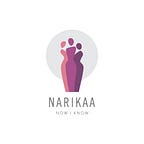BREAST CANCER AND SCREENING
Breast cancer is caused when a group of cancerous cells produce a lump or malignant tumor within the breast(s).
Cancer is a potentially life-threatening disease that is caused when abnormal cells grow in a controllable fashion in any organ within the body.
Breast cancer screening tests
If cancer is left untreated eventually spread to different parts of the human body. This group of cancerous cells then spread further to the lymph nodes (in the armpit) or other organs through the bloodstream. According to sources, breast cancer is the second most common cause for female deaths all over the world, and no one factor can be blamed for causing it. So, there is a need to prevent it, and where prevention might not succeed it is imperative to diagnose it at a very early stage — this is where the role of breast cancer screening comes in.
Breast cancer screening is the examination of the breasts for any development of cancerous cells even before there are any overt signs or symptoms of breast cancer. Though breast cancer screening does not prevent breast cancer, it can help in diagnosis at an early stage, thus improving the chances of success in curing a patient following appropriate treatment. Another advantage of early detection is the ability to conserve the breast at surgery by removing only the lump and not the entire breast and also a decent chance of avoiding chemotherapy (and its accompanying side effects) as part of the treatment. Breast cancer screening is recommended for all women over 40 years of age. In younger women who have any family history or even a personal history of breast or ovarian cancer, then a doctor will suggest breast screening.
There are several techniques or various types of tests that can be done for breast cancer screening which are explained as follows:
- Mammogram
It involves taking an X-ray of the breasts. Doctors use this test to examine the breasts and identify if there are any signs of breast cancer development. Having regular mammograms done once every year between ages 40–55 and every 1.5–2 years from ages 55–75 is the best measure to ensure timely early diagnosis.
- 3D Tomosynthesis
It is a digital tomosynthesis (mammography) that provides a 3D image of the breast tissues. When there are no signs or symptoms of breast cancer, the doctors use this technique to detect the same. They are useful in situations when a woman has dense breast tissue, which cannot be examined by a regular mammogram. 3D Tomosynthesis eliminates the risk of missing a small cancer due to the technical superimposition of glandular tissue within the breast. It is the best and most sensitive technique available today.
- Breast ultrasound
This test gives you the image of your breasts by using high sound frequencies. This test is used as a complementary test, which adds to the results of a mammogram for breast cancer screening.
- Breast MRI
MRI stands for magnetic resonance imaging and uses powerful magnetic waves to get breast pictures in detail. It is advised when a female is at high risk of having breast cancer (hereditary breast cancer e.g. BRCA1 mutation carriers) or even in women with silicone implants in whom a mammogram is not easily feasible. It gives detailed images of the woman’s breasts, which is then reviewed on the screen of a computer.
- Breast Self Examination
This process involves learning to examine one’s breast by themselves. There are many teaching videos available on the internet for the same. Although medical evidence is yet to be established in favor of this technique, it is a highly recommended tool as it raises awareness of the risk and signs of breast cancer within the community. It is recommended that all women should practice breast self-examination once a month (just a day after the menstrual period in menstruating women) starting at the age of 20.
- Clinical Breast Examination
This technique involves getting oneself clinically examined by a specialist breast surgeon/general surgeon/gynecologist/family physician at regular intervals to check for any abnormality. It is recommended once in three years under the age of 40 and annually after 40.
Conclusion
Technology has made it much easier and faster to detect and treat cancer. Women can go through a number of treatment options available and cure themselves of such life-threatening diseases. Breast cancer is a disease that is very common in females. So, it is essential to detect it at the right time and treat it with the correctly chosen technique.
Special thanks to Dr. Mandar Nadkarni (MS, DNB, Oncoplastic Breast surgeon) for the expert advice.
For more videos visit our website
Narikaa — https://narikaa.com/
Facebook — https://www.facebook.com/Narikaa.NowIKnow/?modal=admin_todo_tour
YouTube — https://www.youtube.com/channel/UC_ePvyEYzE-hhRPjE7tcxuQ
